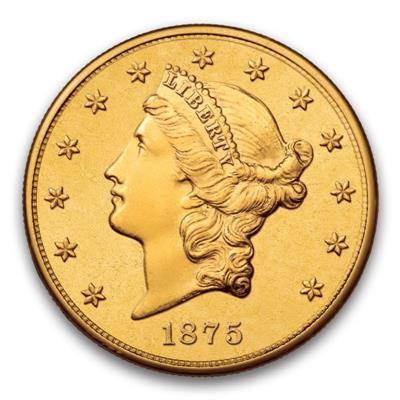Why People Collect Coins
Coin collecting used to be a pastime for elites; today it’s a hands-on way for anyone to explore art, history, technology, and economics—one small artifact at a time.
It Often Starts with One Coin
For most collectors, the journey begins when one coin stands out—an older piece in pocket change, a coin from a relative’s travels, a commemorative half dollar, or a photo of a rarity that sparks curiosity. Questions follow: Why does it look different? What is its story? Who authorized it? How was it made? What’s it worth?
Those questions lead to the realization that coins have meaning far beyond purchasing power. From there, a theme emerges—maybe the first spark was an Indian Head cent (1859–1909), leading to a complete date set, or perhaps a Kennedy half dollar prompts a focus on portraits of leaders or world commemoratives.
Coin Anatomy: The ABCs
Parts & Surfaces
- Obverse (heads): Usually the principal design or portrait.
- Reverse (tails): Often the denomination and inscriptions.
- Planchet / Flan: The blank metal piece before striking.
- Edge: Plain, reeded, engrailed, or lettered.
- Rim: May be raised (milled) or sharp (“wire rim”).
- Type: The overall design used on a coin issue.
How Striking Works
Historically, the reverse die sat as the anvil while the obverse die struck from above like a hammer, often creating slightly higher relief on the obverse. Modern minting uses high-speed presses, refined alloys, and precise die prep to deliver uniform strikes and brilliant finishes.
Condition & Grading—Why It Matters
Condition heavily influences value. Below is a simplified translation of classic terms into modern expectations:
Uncirculated (Mint State)
No wear from circulation; original luster intact. “Proof” coins are struck with polished dies and planchets, made for collectors—not a grade.
Extremely Fine (XF/EF)
Very light wear on high points; most details sharp; some luster may remain.
Very Fine (VF)
Moderate wear; all major details clear and readable—common “collector grade” for scarcer issues.
Fine (F) → Good (G)
Noticeable to heavy wear. Design remains identifiable in Fine; in Good, it’s well-worn but still discernible.
Tip: Third-party certification (PCGS, NGC) helps with authentication, standardized grading, and resale value.
What Drives Value?
- Rarity & Demand: How many exist and how many people want one.
- Grade & Eye Appeal: Luster, strike, surfaces, and overall look.
- History: The event, person, or technology the coin represents.
- Market Context: News cycles, collecting trends, and bullion prices.
Age alone doesn’t determine value—some ancient coins are affordable, while modern key dates can be expensive. Preservation, rarity, and demand are key.
Mint Errors & “Freaks”
Off-center strikes, double-obverses, wrong-planchet strikes, missing designs, and other dramatic errors can be valuable. Because they resemble counterfeits or post-mint damage, error coins benefit from expert attribution and certification.
Counterfeits & Alterations: Stay Safe
- Buy from established dealers and reputable marketplaces.
- Be cautious with rare dates and mint marks—alterations are common.
- Learn diagnostics for key issues; use reference guides and numismatic forums.
- Consider PCGS or NGC certification for high-value coins.
Storing & Caring for Your Coins
- Use inert holders (non-PVC flips, archival 2x2s, capsules, or albums).
- Handle coins by the edges only.
- Never polish; if cleaning is necessary, consult a professional first.
- Keep in a stable, dry environment with minimal temperature changes.
A Brief History of Coin Collecting
Coin collecting dates back over 2,000 years. Wealthy Romans admired Greek coins for their beauty. The Renaissance revived interest in classical art and medals. By the 18th–19th centuries, scholars and national pride led to systematic collecting, and societies flourished. Today, thousands of clubs and online communities connect collectors worldwide.
How to Start—Three Easy Paths
- Date Set: Pick a series (e.g., Lincoln cents) and collect one from each date and mint.
- Type Set: Build a sampler across designs, metals, and minting methods.
- Theme Set: Focus on portraits, animals, historic events, or favorite eras.
Want Help Building or Evaluating a Collection?
Evanston Coins & Collectibles (Evanston/Skokie area) buys and sells coins, bullion, and currency. Private appraisal rooms, secure facility, and fast testing (XRF, magnet, acid as needed). PCGS/NGC/PMG knowledgeable.
Visit Evanston Coins & Collectibles or call (224) 563-5684
- OAKTON COINS & COLLECTIBLES – COIN DEALER NEAR EVANSTON
- WHAT’S THE REAL PRICE?
- WHY NOT SELL THAT GOLD?
- GOLD AND PRECIOUS METALS
- ESTATE JEWELRY
- SELLING YOUR DIAMONDS OR DIAMOND JEWELRY
- EVANSTON’S MOST TRUSTED AUTHORITY ON COINS
- SELL JEWELRY EVANSTON – REVIEWS
- HOW AND WHERE TO SELL A DIAMOND OR JEWELRY IN EVANSTON
- 30 COLLECTIBLES THAT ARE NOW WORTHLESS
